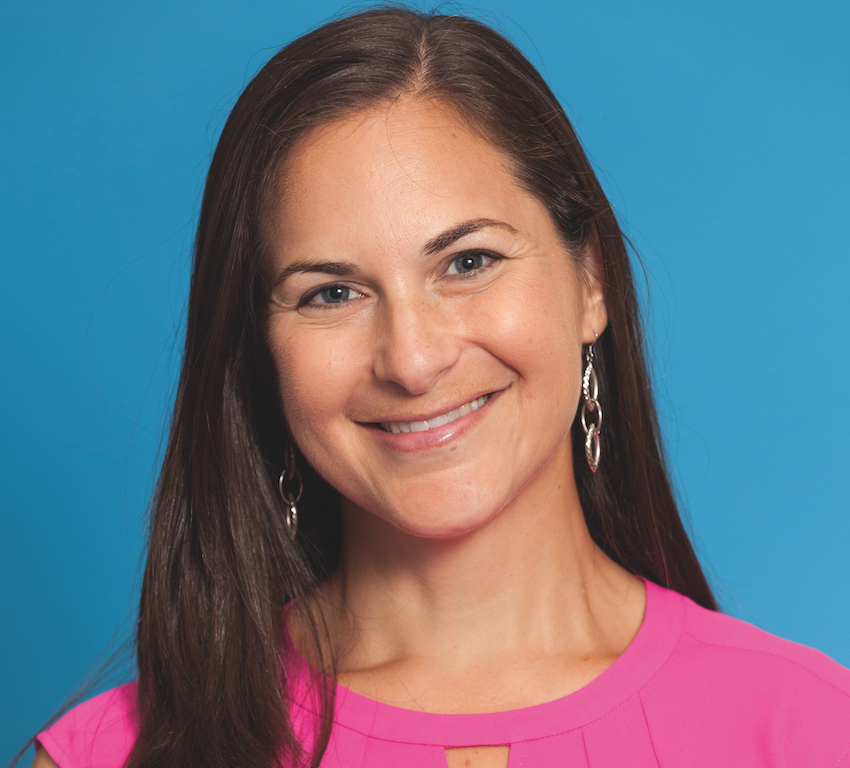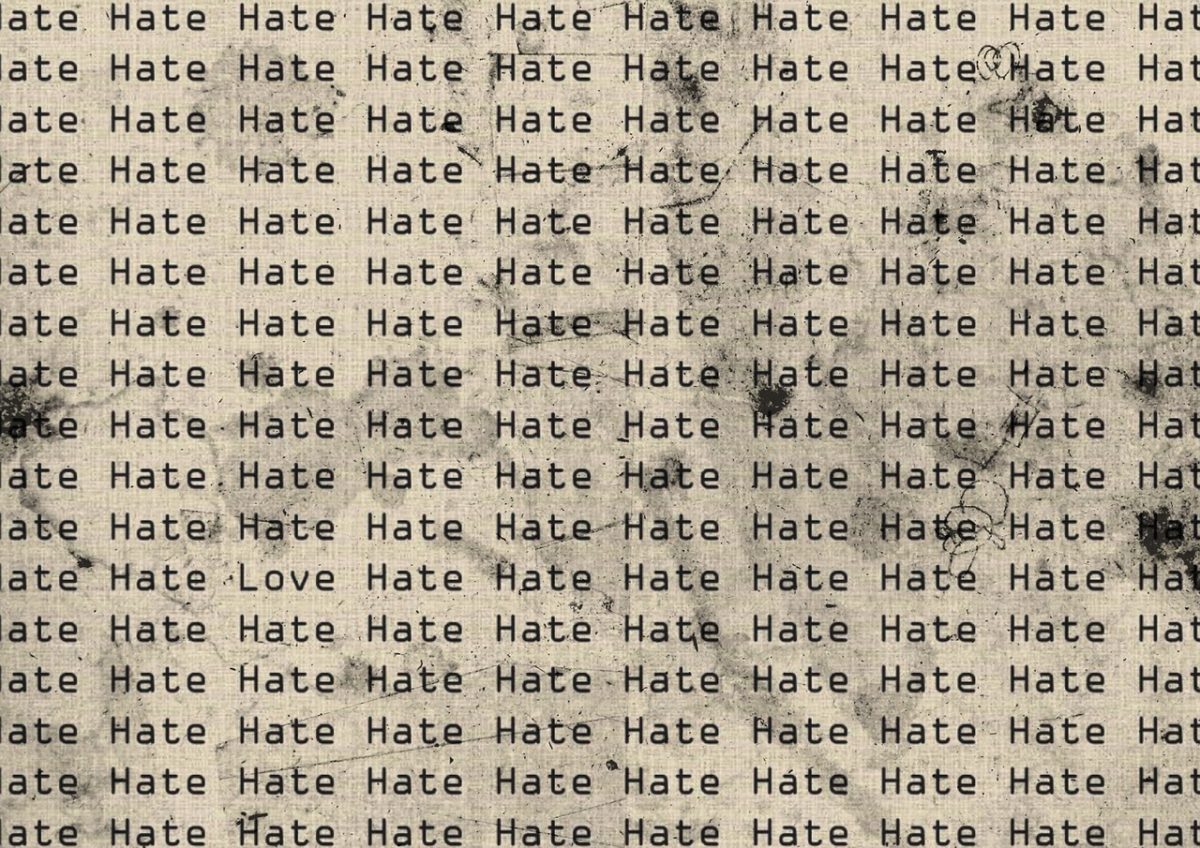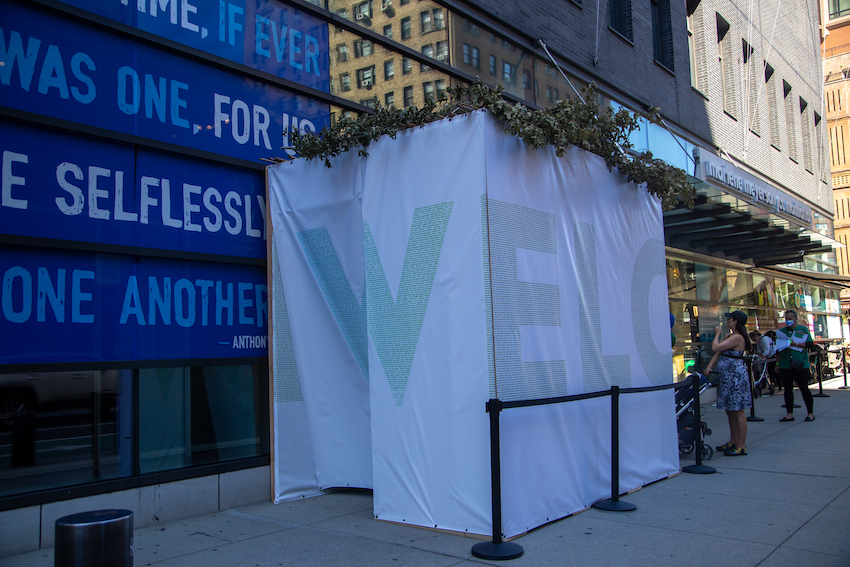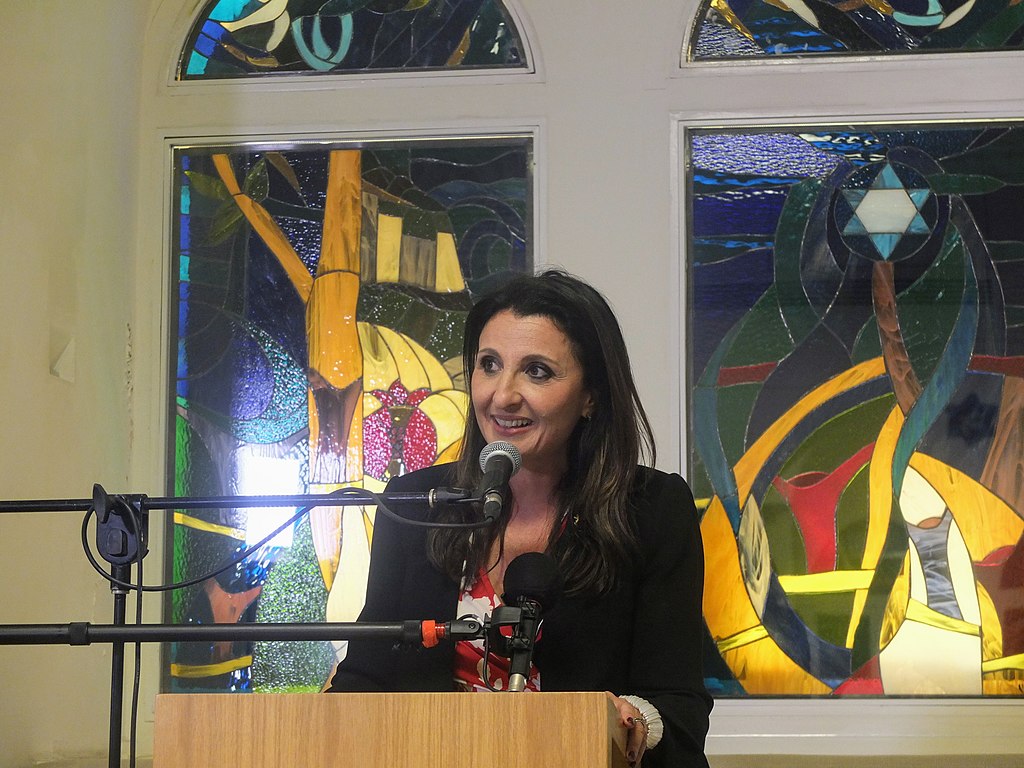Your Daily Phil: New ADL, L’Oréal USA partnership + Gersons give $18 million to African health care initiative
Good Monday morning!
Ed. note: As the holiday season wraps up, Your Daily Phil will return on Thursday.
L’Oréal USA is funding a digital extension of the Anti-Defamation League’s (ADL) “Echoes & Reflections” Holocaust education program, which has reached eight million students since its launch in 2005, an ADL spokesperson told eJewishPhilanthropy.
Until now, “Echoes & Reflections” has focused on providing professional development and curriculum for educators, while the new component supported by L’Oréal USA will include activities and resources designed for students to access independently.
It will serve more than 100,000 middle and high school students at about 1,750 schools by the end of 2024. ADL will select the schools by tapping its existing network of Holocaust educators who use “Echoes & Reflections” material, and will also work with the 1,600 schools who participate in its “No Place for Hate” program, which helps schools combat bias and bullying.
The ADL will also give its “Courage Against Hate Award” to Jean-Paul Agon, chairman of the L’Oréal Group, on Nov. 7, at the organization’s summit on antisemitism and hate. Past winners of the award include Apple CEO Tim Cook and Chobani CEO and founder Hamdi Ulukaya.
Rabbi Erica and Mark Gerson have given $18 million to African Mission Healthcare (AMH), which helps Christian hospitals in Sub-Saharan Africa. The United Bank of Switzerland (UBS) has added $2 million to the gift through its Optimus Foundation.
“Perhaps the greatest humanitarian problem in the world is the lack of access to any medical care for almost everybody in Africa,” said Gerson, an investor and co-founder of the Gerson Lehrman Group, in “Faith and Philanthropy from a Jewish Perspective,” a UBS podcast. “In most African countries there’s one doctor for 50,000 people,” he said
Gerson co-founded AMH with Dr. Jon Fielder, who serves as the group’s chief executive, in 2010, to provide financial support to the Christian missionary doctors who are both providing care in impoverished African nations and starting to build healthcare systems.
Fielder has spent two decades in Africa doing that work, after deciding that his Christian faith compelled him to fight the AIDS epidemic by practicing medicine there in the early 2000s. Gerson co-founded and serves as chairman of United Hatzalah of Israel.
AMH will receive $11 million of the gift immediately, while the remaining $9 million will be made available as a donor match program. “A single gift of this magnitude is virtually unheard of in African clinical medicine,” said Fielder.
The ask
Naomi Strongin on the Jewish Community Foundation of L.A.’s biggest-ever grant cycle


Jewish Community Foundation of Los Angeles
With more than $1.4 billion in assets, the Jewish Community Foundation of Los Angeles made $116 million in grants in 2020, the lion’s share on behalf of donors whose assets are managed by the foundation in the form of donor-advised funds, endowments or other vehicles. The foundation also runs its own grant programs, shaped by the Center for Designed Philanthropy. The center shifted its emphasis to COVID-19 relief in 2020 and has decided to sustain that focus for at least another year, with its biggest-ever grant cycle of $3.7 million, Naomi Strongin, the center’s vice president, told eJewishPhilanthropy’s Helen Chernikoff.
Helen Chernikoff: Why did the foundation decide to keep concentrating on pandemic recovery, at least for now?
Naomi Strongin: These grants were really a response to what we were hearing from the community. When the pandemic happened, we completely pivoted all of our institutional grants to our COVID response. Phase one was about emergency needs: health and housing, scholarships for students in day schools. We thought that by the end of 2021 that we’d be back to business as usual. We went back out into the community and we came to a better understanding of how these organizations are being impacted by COVID now. That’s how the “Reimagine” grants were born. We heard from nonprofits like Moishe House that they needed help moving from virtual to hybrid. We heard about a lot of mental health and wellness needs from groups like Hillel. We heard about partnerships being formed, and we wanted to support those collaborations. We put $2.57 million into those efforts.
HC: You made grants to 22 nonprofits and 23 synagogues. Why the focus on synagogues?
NS: About $1 million went to synagogues. The trauma and the toll that the pandemic has taken on synagogue staff has been tremendous. You could call it an invisible impact of COVID. By taking care of the people who lead the synagogues, we’re taking care of the people who go to those synagogues — Beth Jacob Congregation, IKAR, the Nachshon Minyan.
HC: The foundation decided in 2021 to not hold its “Cutting Edge” grants program and to instead do the “Reimagine” grants. How are they different?
NS: We ran the Cutting Edge grants in 2017 and 2019, and gave about $1 million each year. They’re about nurturing the potential for cutting-edge impact in the Los Angeles Jewish community. They support groups that are just launching, and programs within larger institutions. We also support a non-Jewish grant program. It used to give small amounts to various causes and now its targeted each year to a specific issue, such as human trafficking and homelessness. That’s grown from $100,000 when I started 12 years ago, to $1 million this year dedicated to the issue of racial equity for communities of color.
HIGH PRIORITY
Beyond naming and shaming: New strategies needed to combat antisemitism


eJP Archives
“Fighting antisemitism is now one of the highest priorities of virtually every North American Jewish federation and many national Jewish organizations,” writes John Ruskay, senior fellow at the Jewish People Policy Institute and executive vice president emeritus of UJA-Federation of New York, in an opinion piece for eJewishPhilanthropy.
Naming and shaming: “‘Naming and shaming’ has been the Jewish community’s primary strategy to combat antisemitism for decades. Acknowledging that hate, racial stereotyping and antisemitism are part of the human condition, multiple efforts were forged including litigation, legislation and arguably most important, successfully creating a broad public consensus — among elites and the media — that expressions of antisemitism were simply unacceptable. When we read or heard of an antisemitic speech, statement, article or book, Jewish leaders called it out and pressed political, cultural and religious leaders and the media to denounce those responsible and insist they be shamed, censured or removed from leadership positions. These efforts were, and remain, impactful and no doubt deterred unknown numbers of purveyors of hate from expressing their antisemitic views. That said, ‘naming and shaming’ is clearly not sufficient on its own to halt, let alone reverse, the growth of antisemitism.”
Collective response: “As a community, we instinctively understand reports of attacks on Jews as being part of the centuries-long history of Jew hatred that led to attacks on Jews and Jewish communities, pogroms and ultimately the Holocaust. While understandable, we might ask whether this is the wisest, most strategic way to frame our collective response.”
Social media influence: “The explosion of social media in the past decade has enabled racial hatred and antisemitism to be widely disseminated. Add exploiting racial fears for political gain and the alarming increase of mental illness, isolation and depression, particularly among the young, and this is a volatile mix that has produced elevated enmity against various demographic groups. And while unique factors contribute to the antipathy toward each group — African Americans, Hispanics, Asians, immigrants and Jews — critical views about nationalism, ethnonationalism, Zionism and/or Israeli government policies can, and no doubt do, contribute to the growth of antisemitism in America.”
SOCIAL BONDS
Six lessons from a hybrid board retreat


Courtesy
“In the days and weeks leading up to Aug. 27, 2021, we were incessantly refreshing The New York Times COVID map for risk level. Just don’t be purple, just don’t be purple, we’d pray as we zoomed in on Montgomery County, Va., where the board retreat we were planning was scheduled to take place,” write Maya Dolgin, founder of BraverMe, and Rebecca Gerbert, director of Hillel International’s Center for Volunteer Leadership, in an opinion piece for eJewishPhilanthropy.
Learnings: “Luckily, Montgomery County, home to Virginia Tech, never turned purple (the highest level of risk exposure). Despite some angst, the board retreat was a go, and off to Virginia we went to facilitate a fully outdoors, hybrid weekend for the Hillel@VT Board of Directors… As other organizations debate whether to hold important events in person, online, or through a hybrid format, here are some learnings that can help in your own planning and implementation.”
Safety first: “Getting board members to visit a college campus on its first weekend of the school year required several layers of reassurances. In an early communication, we asked everyone to confirm that they would comply with Centers for Disease Control, Virginia and Virginia Tech health and safety guidelines (which included vaccinations). As the event approached, we informed them that the entire program would be held in an extra-spacious tent instead of indoors. Finally, we requested that everyone submit a negative COVID test before arriving. This was all done to set expectations while reassuring the board members that we’d be taking their health and safety seriously.”
It’s OK to take risks: “Don’t be afraid to invite everyone to take risks. After a year and a half of boring Zoom meetings, we wondered whether these board members would remember how to sit around a firepit and open up to new people. When invited, would they share things they don’t normally say out loud? Would they see anything that’s not strictly business as a waste of time? Admittedly, it felt risky to even suggest certain activities that might be considered too touchy-feely after a year of sitting and listening passively on Zoom.”
Worthy Reads
Answering The Call: The editors of the Harvard Crimson both thank the donor who has funded a 24-hour mental health hotline on their campus and ask why the existence of that service — and others like it — must depend on philanthropy. The Crimson’s reporting revealed that the donor, who is a parent of a current student, was presented with a long list of projects the university’s counseling and mental health services department needed funded. “Mental health resources for students should not be contingent upon serendipitous donations. With an endowment in the billions, why can’t the University fund these mental health initiatives itself?” the editors ask. [HarvardCrimson]
Charity At Home: Walter Scott, the Omaha billionaire who died on Saturday at age 90, left a legacy of giving in his hometown that will continue after his death, reports Josh Funk in the Associated Press. Scott and his late wife, Suzanne, supported the University of Nebraska at Omaha, the University of Nebraska’s Medical Center, a performing arts center and the zoo, and almost all of his personal assets will be donated to his foundation, which supports local projects. “My children were taken care of long ago — what they make of their lives is now their own responsibility,” Scott said. “Ultimately, nearly everything will go to the foundation, with the hopes it will benefit my hometown for many generations to come.” [AP]
Positive Connection: While nonprofits are indisputably different from businesses, write Christie George and Taren Stinebrickner-Kauffman in Stanford Social Innovation Review, they would nonetheless benefit by shifting their understanding of mergers and acquisitions from a transaction that signals failure to one that can serve the mission of both organizations. However, it’s important that leadership and staff understand that most of these transactions are acquisitions, despite the fact that they’re often called mergers for public relations purposes. “Trying to navigate false equality is really challenging. We need to turn acquisitions into a victory for the acquired organization,” said Jacob Harold, the executive vice president of Candid, which was formed from a merger of GuideStar and the Foundation Center. [SSIR]
Community Comms
Be featured: Email us to inform the eJP readership of your upcoming event, job opening, or other communication.
Word on the Street
The David Berg Foundation and the Leon Levy Foundation are providing support to the Center for Jewish History and jMuse for a virtual symposium, “Confronting Antisemitism: Activating Archives, Libraries, and Museums in the Fight Against Antisemitism,” scheduled for Oct. 17… Colorado-based philanthropist Marcel Arsenault announced a 15-year, $200 million commitment through his foundation PAX sapiens, in support of pandemic prevention… The Open Society Foundations pledged an additional $30.5 million in solidarity with the fight against vaccine inequity… The Bill & Melinda Gates Foundation committed $922 million over the next five years to address global nutrition… The New School has received a $9 million commitment from the Arnhold Foundation to benefit the university’s ongoing commitment to research on global issues… The Lilly Endowment Inc. is providing a $10 million grant to The Salvation Army to support ongoing emergency response and long-term recovery for those affected by Hurricane Ida and by wildfires across 10 Western states…
Pic of the Day


Marlene Meyerson JCC Manhattan
The word “Welcome” on the Marlene Meyerson JCC Manhattan’s sidewalk sukkah is created out of the names of members, staff and donors.
Birthdays


eJP Archives
Deputy mayor of Jerusalem, Fleur Hassan-Nahoum…
Investor and pioneer in the commercial real estate industry, Sam Zell(born Shmuel Zielonka)… Co-founder of The Home Depot and owner of the NFL’s Atlanta Falcons, Arthur M. Blank… Of counsel, antitrust and business litigator at the Locke Lord law firm, Stephen J. Landes… Board member of the Milken Family Foundation, Ellen Sandler… Chairman of the Victoria Beckham fashion brand, Ralph Toledano… Longtime Washington correspondent and author, Dan Raviv… Former president of the Federal Reserve Bank of Richmond, Jeffrey M. Lacker… President of public relations at Barbour, Griffith & Rogers, Jeffrey H. Birnbaum… Member of the Minnesota House of Representatives and married to a Minneapolis rabbi, Frank Hornstein… Comedian and author, Marc Maron… Chief Rabbi of France, Haïm Korsia… Member of the House of Representatives since 2005, Debbie Wasserman Schultz… Associate producer at Elm Court Productions, Judy Tashbook-Safern… President and CEO of the Jewish Federation of Greater Philadelphia, Michael Balaban… Deputy managing editor of The New York Times and a principal aide to the publisher, Rebecca Blumenstein… Hockey reporter for Sportsnet and the NHL Network, Elliotte Friedman… President of The Center for Peace Communications, Joseph Braude… Musician, actress, writer, director and comedian, Carrie Rachel Brownstein… Former State Treasurer of Ohio (2011-2019), now running for a U.S. Senate seat in Ohio, Josh Mandel… Architect, entrepreneur and author, Marc Kushner… Executive director of the Jewish Community Relations Council of St. Louis, Rori Picker Neiss… Advisory manager for cyber and strategic risk at Deloitte, Alexa Wertman Brown…
Email Editor@eJewishPhilanthropy.com to have your birthday included.








